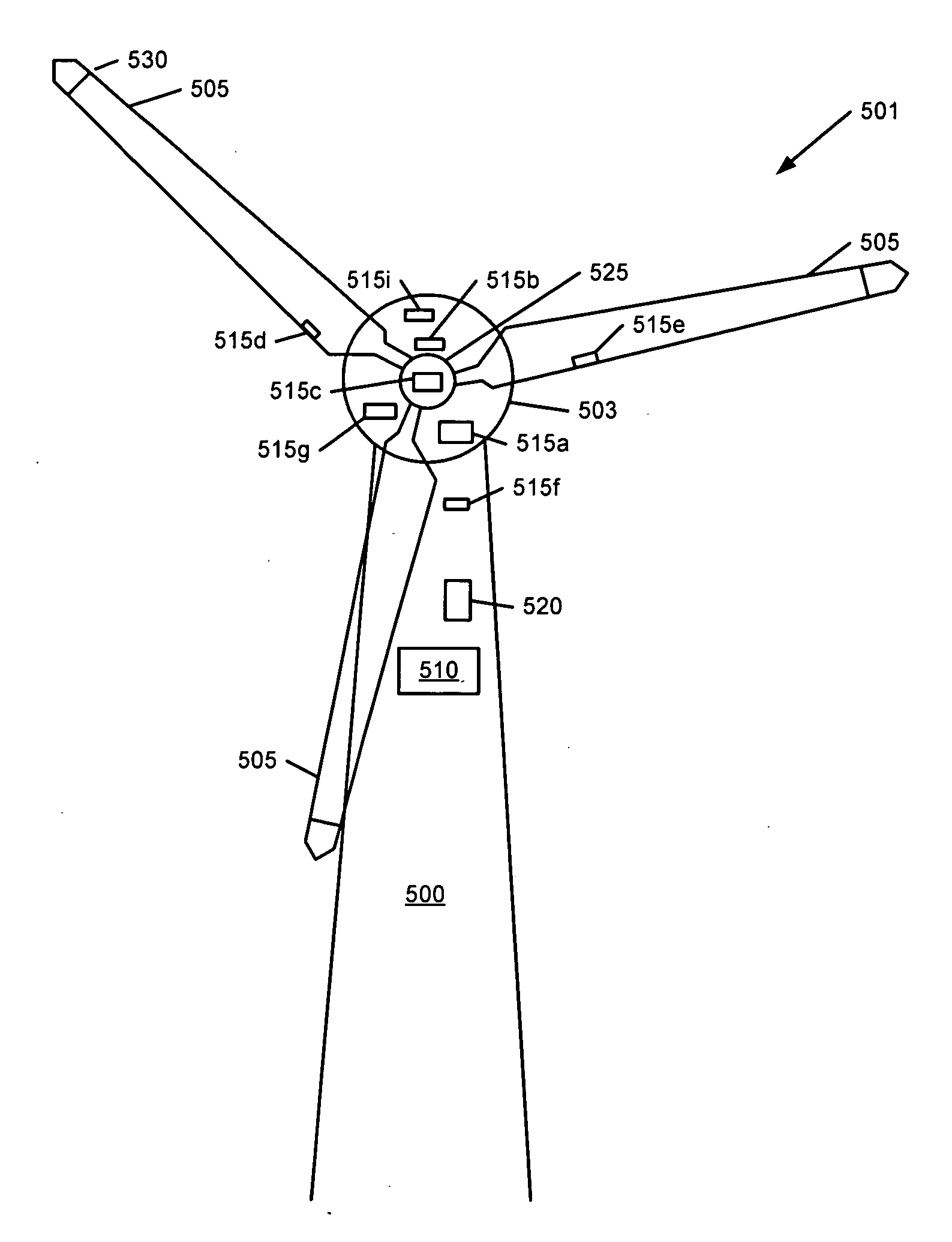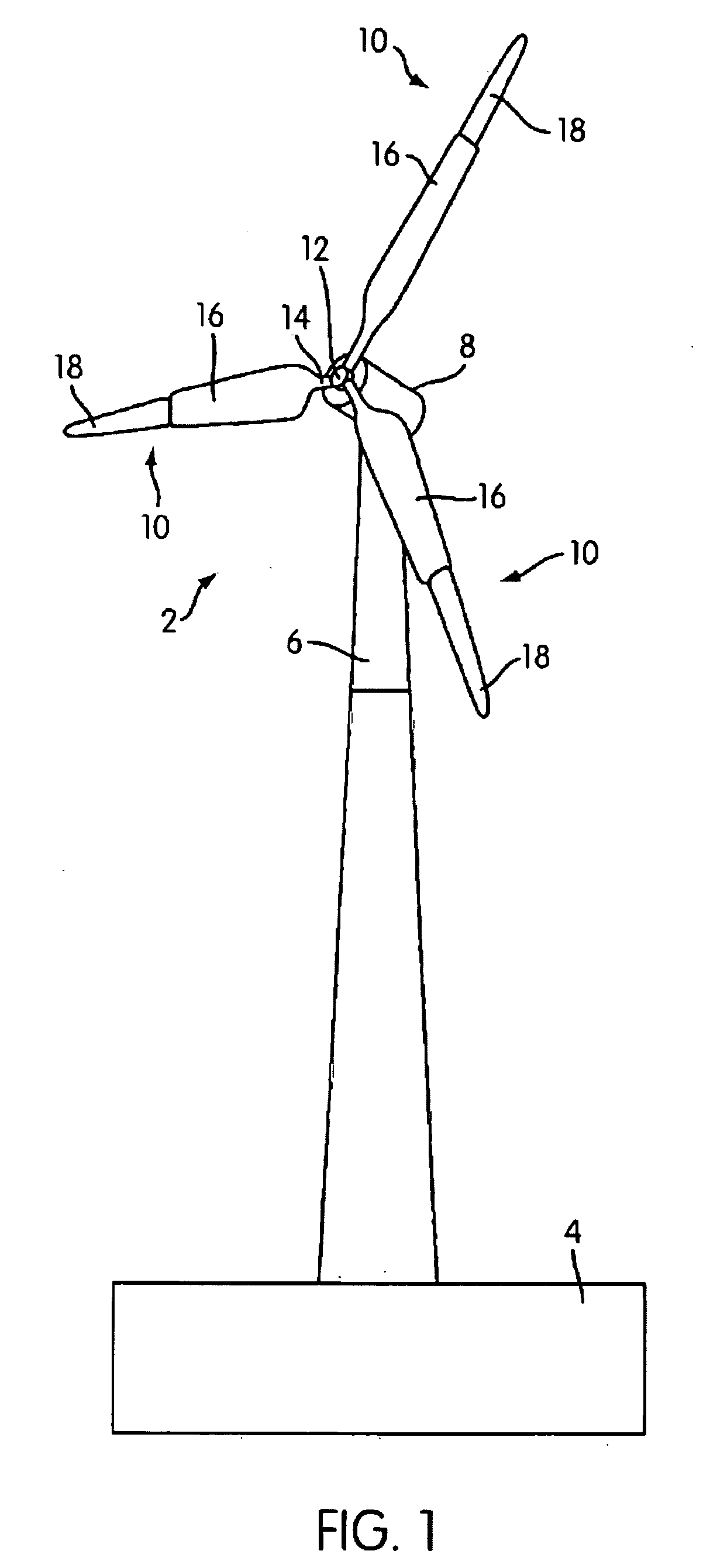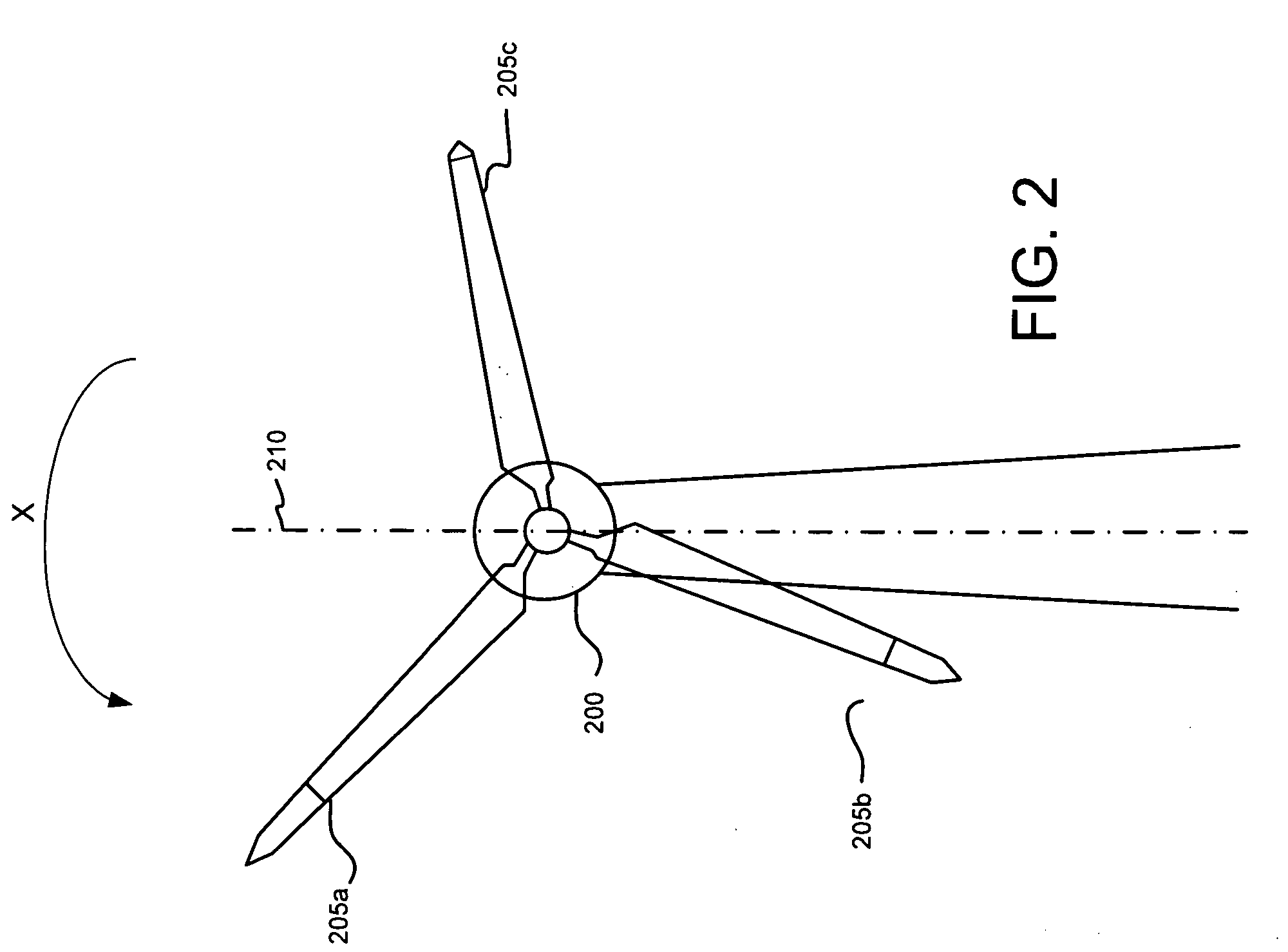Control Modes for Extendable Rotor Blades
a control mode and rotor blade technology, applied in the direction of rotors, marine propulsion, vessel construction, etc., can solve the problems of increasing the number of components, and increasing the number of situations, so as to increase profits, increase income, and increase energy prices
- Summary
- Abstract
- Description
- Claims
- Application Information
AI Technical Summary
Benefits of technology
Problems solved by technology
Method used
Image
Examples
Embodiment Construction
[0021]In the following description of various illustrative embodiments, reference is made to the accompanying drawings, which form a part hereof, and in which is shown, by way of illustration, various embodiments in which the invention may be practiced. It is to be understood that other embodiments may be utilized and structural and functional modifications may be made without departing from the scope of the present invention.
[0022]FIG. 1 illustrates a wind turbine 2 on a foundation 4 with a tower 6 supporting a nacelle 8. One or more blades 10 are attached to a hub 12 via a bolt flange 14. The hub 12 is connected to a drive train (not shown) within the nacelle 8. The blades 10 may be variable length blades having a root portion 16 and a tip portion 18. Variable length blades may be configured to extend and retract given certain conditions. Various modes for controlling a variable length blade may be used to optimize or otherwise increase the effectiveness of such blades and / or a tu...
PUM
 Login to View More
Login to View More Abstract
Description
Claims
Application Information
 Login to View More
Login to View More - R&D
- Intellectual Property
- Life Sciences
- Materials
- Tech Scout
- Unparalleled Data Quality
- Higher Quality Content
- 60% Fewer Hallucinations
Browse by: Latest US Patents, China's latest patents, Technical Efficacy Thesaurus, Application Domain, Technology Topic, Popular Technical Reports.
© 2025 PatSnap. All rights reserved.Legal|Privacy policy|Modern Slavery Act Transparency Statement|Sitemap|About US| Contact US: help@patsnap.com



